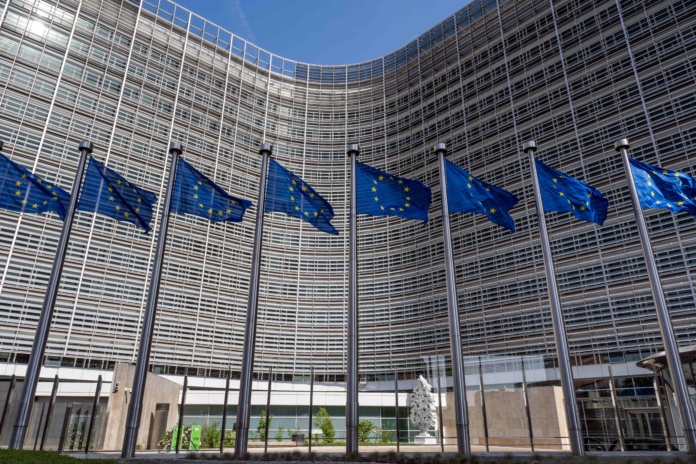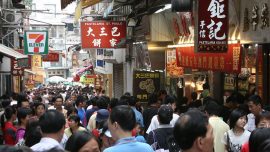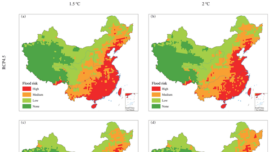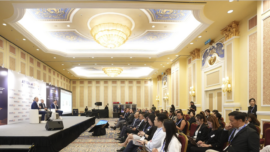
José Luís de Sales Marques
Economist
May is Europe’s month in Macau, bringing back to the limelight a cooperative relationship that has historical meaning and high economic value. This year, Macau properly celebrated Europe Day on May 16, as was traditional before the COVID-19 outbreak and subsequent restrictions on public gatherings, with a cocktail reception and official representations from the EU and the Macau SAR Government. Europe Day is celebrated every year on May 9 to mark the anniversary of the Schuman Declaration, which symbolises the beginning of the European integration process. Additionally, on May 10th, the Macau European Chamber of Commerce (MECC) held its annual Gala Dinner, gathering all European business chambers and associated organisations and individuals. This event showcased the dynamism of European businesses in the region and their ambitions for the future, namely the expectation of extending their actions to the Greater Bay Area and, in particular, the In-depth Cooperation Zone in Hengqin. The recent focus on Macau and EU relations was also highlighted during the recent week-long visit to the region by Xia Baolong, the Director of the Office of the State Council for Hong Kong and Macau, who referred to the need for the region to strengthen relations with the EU in the context of its internationalisation.
In both of these EU-connected gatherings, what caught the eyes and ears of many was the announcement that imports of goods from the EU continued to reign in Macau for the fourth consecutive year and were still doing so up to the first quarter of 2024, surpassing those from the Chinese Mainland, the traditional number one supplier of Macau in almost every category of basic and household goods. These results are even more surprising considering that, through e-commerce, much more has been bought directly by Macau consumers from Mainland suppliers and the recent introduction of high-value-added Chinese e-vehicles in the local market. The valuable question here is whether these trends will remain and why they have happened at all.
This discussion will lead us to explore the features of consumer demand in this region for goods originating from Mainland China and the EU, and whether the segmentation of the market into two major clusters, one satisfying local needs and the other tourists’ appetite for luxury goods, is overly simplified. For this purpose, we will look at Macau’s imports of goods from both Mainland China and the EU over the last five years, using 2019 as a starting point, going through the years of restrictive policies and measures tied with the COVID crisis, and the recovery initiated in 2023 up to the latest available data on this subject.
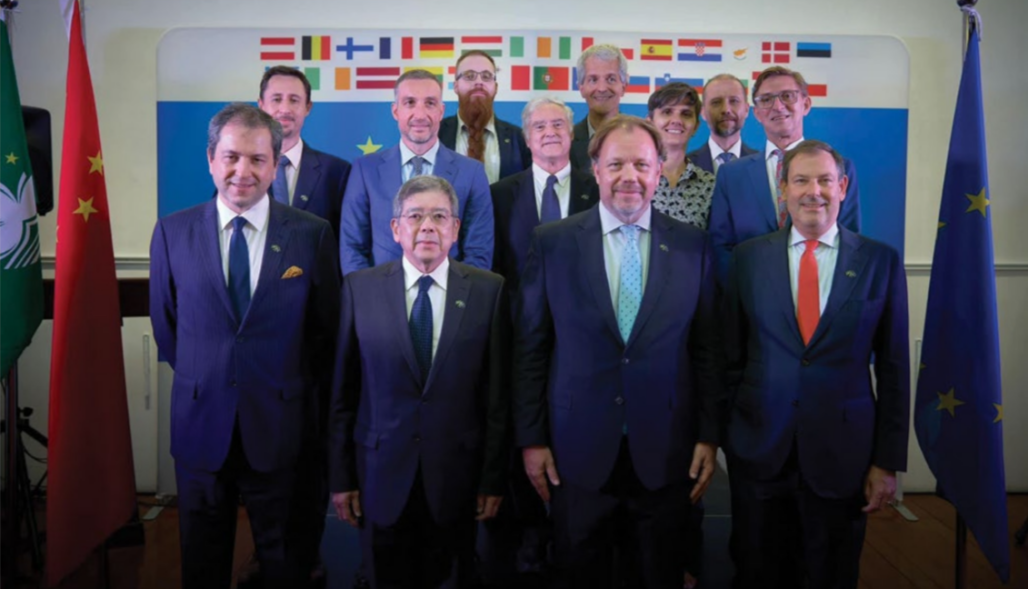
EU trade with Macau
The EU has a longstanding economic partnership with Macau, dating back to the early days of its industrial takeoff in the second half of the twentieth century. Favourable trade policies established by the former European Economic Community contributed to Macau’s growth and development as a manufacturing-exporting economy, with Europe and the United States serving as its main markets. However, as this region’s economy transformed into a tourist and gaming powerhouse under the Macau SAR, the EU became a major exporter of goods to the region, supplying what its luxury industries know best: fashion, cosmetics, and powerful cars, while enjoying a trade surplus with this region. Only Mainland China, with its provision of all-around consumer and industrial goods, had a bigger stake in fulfilling this region’s domestic demand.
The COVID-19 crisis and its dramatic impact on the region’s economy induced significant changes in consumer behaviour and market structure, with implications for the composition and origin of imports. The economy was already in trouble in 2019, with GDP contracting by -2.2%, and all major components such as private and public investment, internal demand, and export of services also in decline. As restrictive policies were introduced in 2020 locally, nationally, and elsewhere to limit the widespread transmission of the virus and its variants into this region, including successive lockdowns, air travel restrictions, and the closing of public spaces, including restaurants, hotels, and even, occasionally, casinos, the economic impact was severe, with GDP falling by -54.2% in 2020, recovering by +19.3% in 2021, and falling again by -26.8% in 2022, all in real terms. With domestic demand falling, imports from Mainland China followed the trend, decreasing by -9.9% in 2020.
Table 1- Macau imports of goods from Mainland China and EU (2019-2023) in Million MOP
| 2019 | +/- | 2020 | +/- | 2021 | +/- | 2022 | +/- | 2023 | |
| Mainland China | 30,647.5 | (-9.9) | 27,612,8 | (+75.7) | 48,515.4 | (-12.5) | 42,453.2 | (-4.6) | 40,505.3 |
| EU | 24,919.8 | (+14.5) | 28,536.4 | (+74.5) | 49.805 | (-7.9) | 45,854.6 | (-2.7) | 44,612.9 |
| Total Imports | 90,125 | (+2.7) | 92,559 | (+66.2) | 153,877 | (-9.1) | 139,810 | (+1.2) | 141,455 |
| Var. GDP (real terms) | (-54.2) | (+23.5) | (-21.4) | (+80.5) |
Source: DSEC-various publications
However, this is where logic stops, and the story begins to get interesting! Paradoxically, imports to Macau from Mainland China and the EU in 2021 and 2022 were much higher than the average of preceding years, jumping to unprecedented levels (Table 1) in an overall environment where global supply chains were severely disrupted, and cargo planes were a rarity anywhere in the world. The COVID-19 pandemic had a twisted evolution throughout those terrible years and played tricks on learned economists, analysts, politicians, as well as eager consumers and businesses. Unfulfilled expectations of rapid recovery, commercial contracts to guarantee enough supply for a fashion season, and revenge spending for all those who had not had the chance to travel or just indulged themselves in luxury—whatever the causes, the fact is that EU imports into Macau reached unprecedented levels during the pandemic years, surpassing those from Mainland China, the region’s traditional number one supplier.
It is well-known that Macau has two very different economic realities: one associated with gaming, tourism, and related industries and services, and the other constituted by a majority of micro and small enterprises serving the local population and, eventually, tourists. Goods imported into Macau are also demanded as inputs for industries such as construction, for government consumption, and re-export. More than 85% of Macau’s exports are actually re-exports, which account for approximately eight to ten percent of total imports.
The EU’s most popular export to Macau is liquid, but it’s not wine!
France and Italy dominate as the top European suppliers to Macau, holding a combined market share of 89% of total EU imports into the region. Most of the growth in EU imports can be attributed to three categories of goods: essential oils, perfume and skin products, travel goods and handbags, and apparel and clothing. During the COVID years (2020-2022), the value and volume of goods imported under these categories from the EU to Macau were overwhelming (Table 2).
Table 2- Combined value of imports of 3 categories of goods from France and Italy and their respective weight in total EU import in the same period (2020-2022) in Million MOP
| Value | % | |
| Total EU Imports | 124,196 | 100 |
| Perfume | 41,313 | 33.3 |
| Travel+handbags | 24,186 | 19 |
| Apparel+Clothing | 14,710 | 11.8 |
Source: DSEC-Various publications/author’s calculations
The crucial question for businesses is whether EU exports to Macau will be able to maintain this momentum post-COVID and with recovery firmly in place. How well did sales perform, and what are the expectations for the future? Was demand sufficient for such a surge in supply? The answers to these questions are not easy to find and will likely remain trade secrets for a long time.
Based on observation, a significant number of cosmetic shops are mushrooming throughout the city, suggesting they must be doing good business to sustain operations. Some fashion brands have disappeared, but the most resilient and popular ones have refurbished their flagship stores, while others have had to resize or reduce their presence.
The EU started to lose its position as the main supplier to Macau in August 2023, being overtaken by imports from Mainland China. However, it maintained overall dominance for the year and into the first quarter of 2024. Will it hold that position until the end of this year? More importantly, the trade level with the region is still very strong in absolute terms, with great potential for future growth, particularly in sectors beyond luxury goods. As Macau and the Greater Bay Area continue to develop into an international trade, modern finance, high-end technology, and tourism hub with unique characteristics and transregional mobility, Macau and the EU have vast room to further deepen their successful cooperative relationship.
Macau-EU relations
Macau and the European Economic Community (EEC)/EU established a framework Agreement for Trade and Cooperation signed in 1992. Under this agreement, Macau and the EU holds regular Joint Committee meetings, taking place alternatively in Macau and Brussels, to review matters of mutual interest and explore new areas for cooperation. There is already an extensive list of successfully implemented cooperations programs extending from areas such as academia, legal training, language and translation, cooperation on immigration, technology, advanced tourism studies and European Studies. The inception of the Institute of European Studies of Macau (IEEM) in 1995, is a lasting example of successful cooperation between the two parties, as well as, the Jean Monnet programs at the University of Macau and the founding of the Macau European Chamber of Commerce (MECC).





